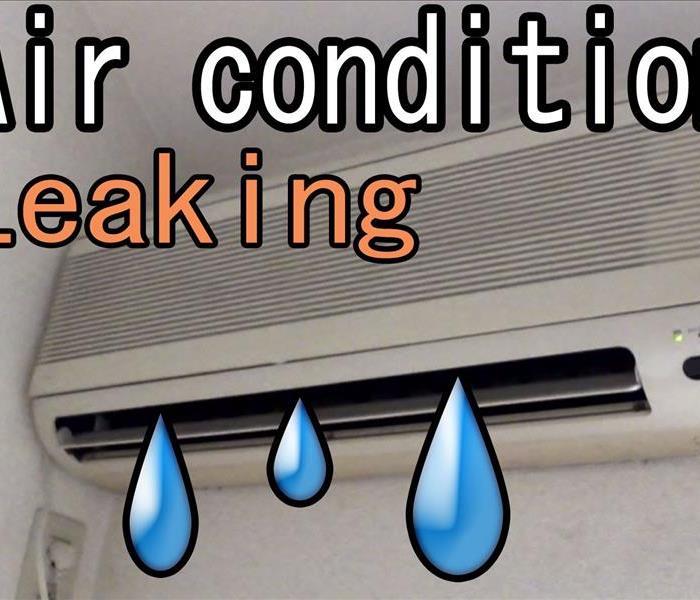Leaky Air Conditioners
7/8/2016 (Permalink)
Batavia Home Care: Preventing Water Damage From Leaky Air Conditioners
Leaking air conditioners can cause water damage and mold growth if it’s not corrected early. The best way to prevent water damage from air is to do regular check-ups of the system. From visual inspections to simple maintenance, Bavatia water damage from leaking attic or rooftop installed a/c units can be avoided with these easy-care tips:
1. Inspect the Overflow Pan
Located under the main a/c unit, the overflow pan catches any condensation that is not being drained out the condensate drain line. You’ll want to inspect this pan for any holes and cracks. If the overflow pan has any cracks, you can try to repair it with epoxy or simply replace the overflow pan. Finding water in the pan is normal, however, it can also be a sign of a clogged condensate drain line.
2. Clean the Condensate Drain Line
This pipe can get clogged with anything from insects to mold, but most often from algae that naturally accumulates from use. An easy way to keep it clear is to pour a small amount of household bleach every 4-6 months to inhibit algae growth. Using a funnel, slowly pour about a cup of bleach down the condensate drain line. If the bleach is not going down the pipe easily, this could be a sign of an already clogged pipe. You can try to suck out the clog with a wet/dry vac, or call a professional to do a thorough inspection of the condensate drain line for you.
3. Inspect the Air Filter
Dirty air filters can block airflow over the evaporator coil. This blockage creates ice to form on the coil, that will eventually thaw and drip when the a/c is not in use. Small drips like this can be overlooked if regular inspections are not made. A slow drip is a silent disaster in the making as it slowly soaks the insulation, wooden beams, and drywall. Mold growth is sure to follow, further weakening a damaging your home.
Regular check-ups of your a/c unit can help prevent and catch leaks before they become a big problem, but some leaks may be missed. Be sure to check for signs of water damage and mold growth around your air conditioning system such as:
• Blistering paint
• Discoloration on the walls or ceiling
• Drips or condensation on the walls or ceiling
• Mildew odor
• Sagging ceiling
• Walls spongy to the touch
If you are in need of water damage restoration or would like moisture levels in your home checked, SERVPRO of Batavia is ready to help 24 hours a day, 7 days a week.





 24/7 Emergency Service
24/7 Emergency Service
